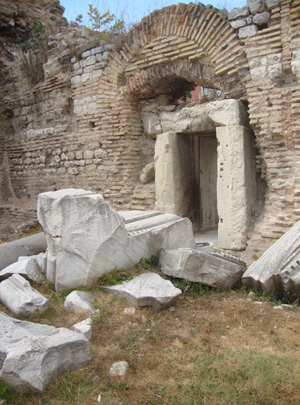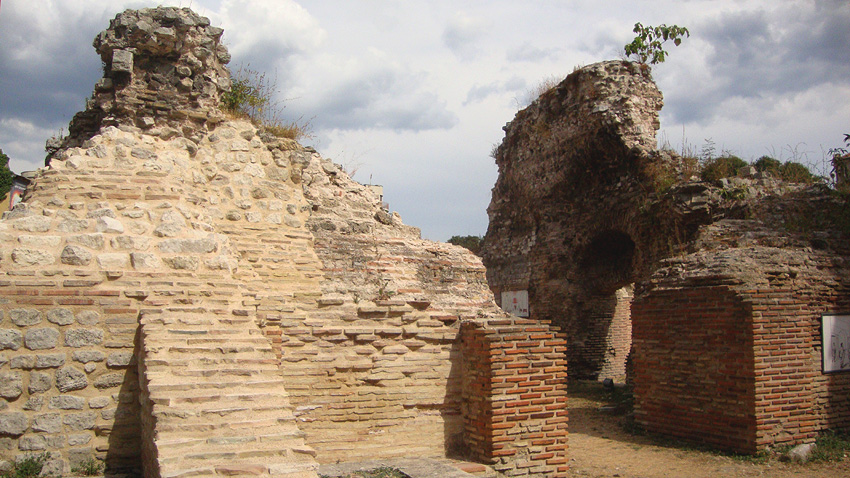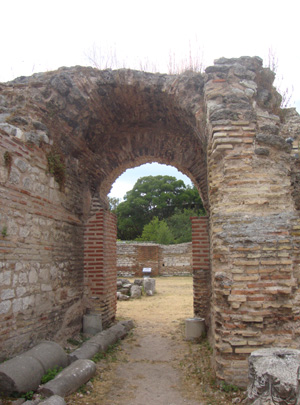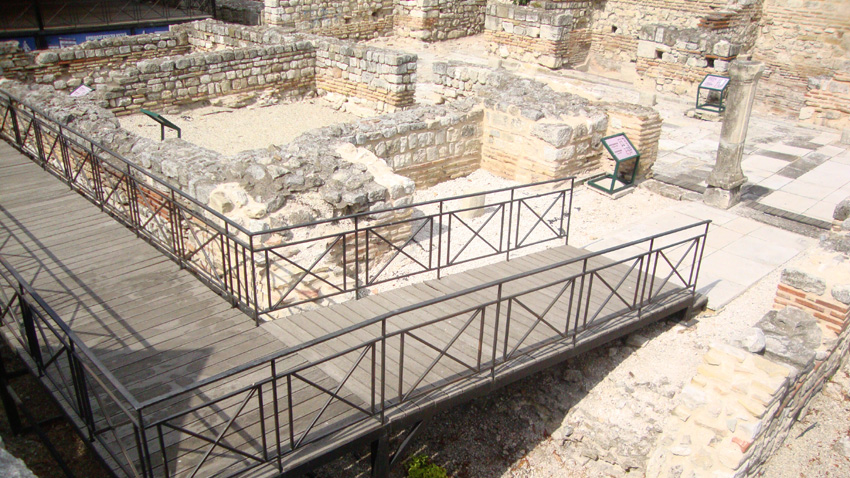 The remains of the biggest public building from antiquity ever discovered in Bulgaria are located in the southeastern part of Varna, not far from the port – the Roman thermae, the baths of the ancient town of Odessos. Covering an area of over 7,000 square meters they are considered to be the biggest Roman-time remains in the Balkans and the fourth biggest in Europe.
The remains of the biggest public building from antiquity ever discovered in Bulgaria are located in the southeastern part of Varna, not far from the port – the Roman thermae, the baths of the ancient town of Odessos. Covering an area of over 7,000 square meters they are considered to be the biggest Roman-time remains in the Balkans and the fourth biggest in Europe.
It was prominent archaeologist of Czech-Bulgarian descent and Bulgarian Academy of Sciences academician Karel Skorpil that drew public attention to the august ruins of the ancient building. Skorpil was a trail-blazer in archaeological science in the country and the man who discovered the remains of the first Bulgarian capital Pliska. There is a bust honouring him near the thermae in Varna.
Later, in the second half of the 20th century over a period of ten years or so, a string of Bulgarian archaeologists uncovered the ancient baths – Milko Mirchev, Alexander Kuzev and others. What they discovered was that they were imperial-type thermae, with all rooms on the main floor arranged symmetrically.
Prof. Valentin Pletnyov is director of the Regional Museum of History in Varna:
“There were huge vaulted rooms inside, arranged in sequence. All service premises were on the ground floor – the supply and staff services corridors, the toilets. On the upper floor were the baths – several extensive rooms including a changing room and a vast room for people to converse. People met there to talk because that was what people came to the thermae for. There was also a cold-water room, followed by warm and hot-water rooms. That is the universal principle of any Roman thermae.”

 The building was an impressive sight, towering to a height of 20-25 meters, including its vaults. Inside, the rooms were duplicated symmetrically from East to West, each with its own pool. On the inside it was lined with marble. The walls and the floors were warmed using special hypocaust systems (a heating system in which the floor was raised above the ground by pillars, with a layer of tiles, then a layer of concrete then another of tiles on top and spaces were left inside the walls for hot air to circulate from special furnaces). Now archaeologists are finding lavish ornamentation, mostly statues that are on display at the museum – figures of different deities, reliefs etc.
The building was an impressive sight, towering to a height of 20-25 meters, including its vaults. Inside, the rooms were duplicated symmetrically from East to West, each with its own pool. On the inside it was lined with marble. The walls and the floors were warmed using special hypocaust systems (a heating system in which the floor was raised above the ground by pillars, with a layer of tiles, then a layer of concrete then another of tiles on top and spaces were left inside the walls for hot air to circulate from special furnaces). Now archaeologists are finding lavish ornamentation, mostly statues that are on display at the museum – figures of different deities, reliefs etc.
However, the maintenance of the grand thermae proved too costly. And when in the 2nd-3rd century the town fell into decay, when the invasions started, they were most probably abandoned. For the needs of the population, the so-called small thermae were built around 200 meters from the old building. The grand thermae continued to exist but lost a good deal of their function; in the 5th-6th century it was taken over by the small thermae which are there to be seen on the beachfront, close to the harbour.
“In these two years a route that is unique for Bulgaria – the Roman thermae of Odessos – was created, funded entirely by Varna municipality,” Prof. Pletnyov says. “It includes the small thermae, with parking space for buses, as well as the grand thermae. More than half a million leva (250,000 euro) was invested over these two years in restoring these archaeological monuments, opening them to the public, in lighting etc. Visitor centres were opened at both locations.”

The centre at the grand thermae is particularly impressive. Archaeologists say they expect restoration work to continue this and next year because there are stages at both the small and the grand thermae that could be transformed into space for different summertime cultural events – theatre and opera, chamber concerts, exhibitions.
English version: Milena Daynova
The Bulgarian Land Forces are celebrating their holiday today. A statement from the Ministry of Defense's press center notes that November 19, 2024 marks 139 years since the glorious victory at Slivnitsa and 146 years since the establishment of..
The book "Ten Great Friends of Bulgaria" by journalist Milena Dimitrova will be presented this evening at 6pm at the Sts. Cyril and Methodius National Library in Sofia. The book recounts the lives of ten people of different nationalities and eras, whose..
The Getty Museum in Los Angeles, USA, is hosting a webinar today entitled Who Were the Thracians? Professor of Classical and Ancient History Matthew Sears will discuss the Thracian legacy and its influence on ancient Athens. Sears is the author of..
On November 30, the Bulgarian Orthodox Church honors the memory of St. Apostle Andrew . In Bulgaria the saint is known as Saint Andrey and the folk..

+359 2 9336 661
